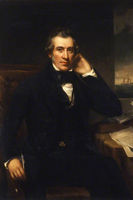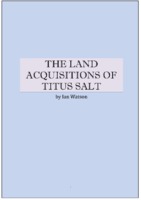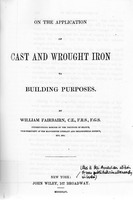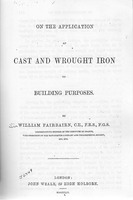Items
Search full-text
fairbairn
Catalogue data (excluding media) available under Creative Commons Attribution-ShareAlike (CC BY-SA 4.0) licence.
 2020.21: Sir William Fairbairn
2020.21: Sir William Fairbairn  Fairbairn, William
Fairbairn, William  C3b-272a-b: The Land Acquisitions of Titus Salt in Shipley & Baildon
C3b-272a-b: The Land Acquisitions of Titus Salt in Shipley & Baildon  B1-425: On the Application of Cast & Wrought Iron to Building Purposes
B1-425: On the Application of Cast & Wrought Iron to Building Purposes  B1-459: On the Application of Cast Iron to Building Purposes
B1-459: On the Application of Cast Iron to Building Purposes Catalogue data (excluding media) available under Creative Commons Attribution-ShareAlike (CC BY-SA 4.0) licence.